The steel inserts / hubs (I’m going to call all of them an “insert” here for consistency) of bumper plates are known to loosen after enough heavy use. Home gym users don’t normally see this at all. It takes a lot of dropping, day after day, month after month, with heavy enough weight, for it to even begin to happen.
And it does happen more often when it’s dropped on bare concrete or onto an wooden top surface platform than it does when dropped onto thick rubber flooring or a modern lifting platform with a rubber top surface where the bumpers hit.
Table of Contents
Recessed Insert (Not Sticking Out)
One of the simplest things that you can visually identify on a bumper that you have in hand is whether the steel can stick out too far from the bumper.
First, to illustrate, here are examples of a couple bumpers I have in my gym…

Contrast with this one:
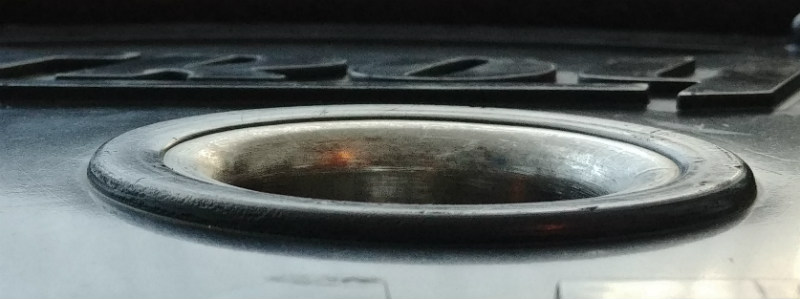
You want one like the second example with a big rubber lip, where even if the rubber compresses a little there won’t be any steel on steel contact.
Why should this matter, you ask?
It has to do with what happens when you drop the bar unevenly. There’s a side to side force created to cause the bumpers to smash not only into each other’s steel insert but also into the steel shoulder of the barbell.
That kind of steel-on-steel impact, in my opinion, is a major cause of bumper inserts coming loose. Enough rubber protecting the steel insert from contact will largely prevent this from happening.
It’s hard to tell from product pictures whether most bumpers have this better design. Besides the Troy bumper in the pic above, I also know that Rogue’s HG bumpers have the better design. I haven’t thought to look at most others I’ve encountered.
Anchors on the Insert
If the steel is protected as above, you might be fine, but it’s not fullproof. Rogue’s HG bumper inserts have been reported to come loose under enough use, and they are recessed really well.
The next step up is a insert that is anchored into the rubber so that it pretty much can’t move in any direction.
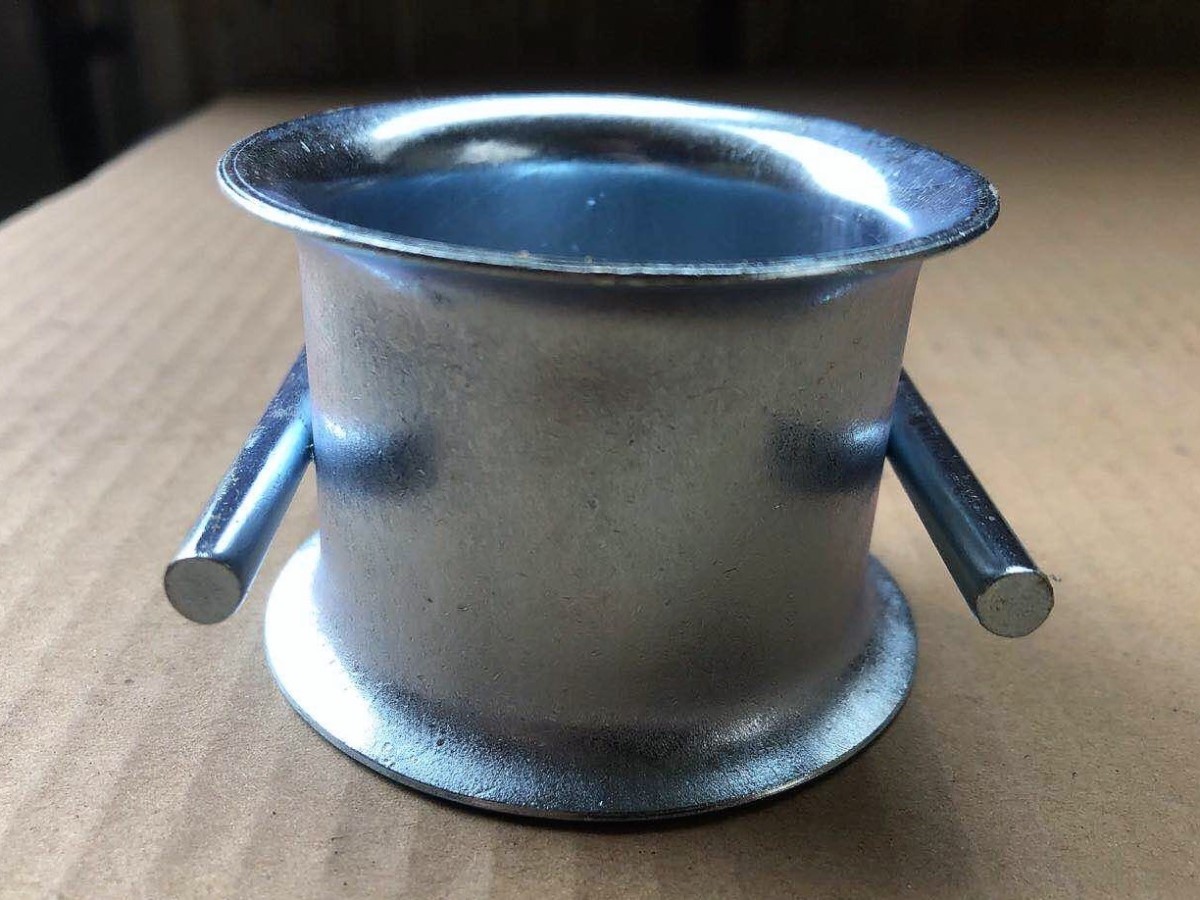
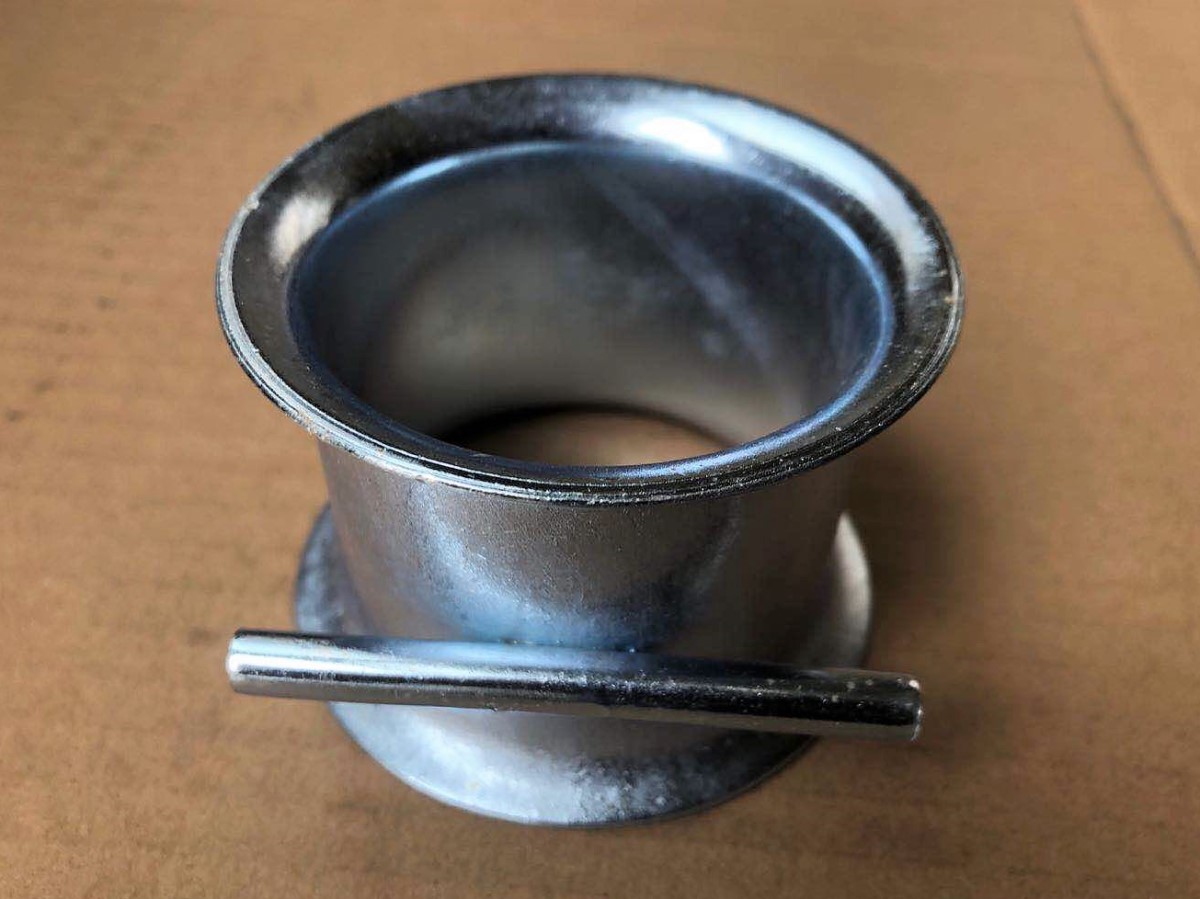
Bells of Steel sent me the above pics showing the anchoring system they use in their Dead Bounce Bumpers. Those rods are welded into place on the sides of the insert.
The hot liquid rubber is poured around the insert in the bumper cast. Those rods stop the insert from spinning and from popping out the face of the bumper under force. The whole bumper would have to break apart before these inserts will come out.
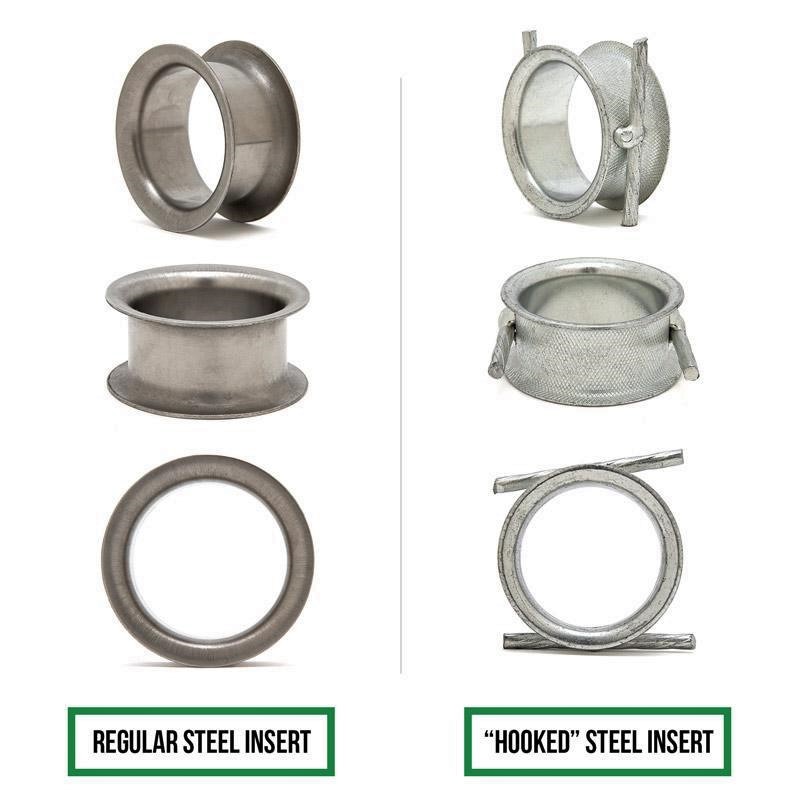
FringeSport does the same type of anchoring system as Bells of Steel, at least in their 25lb and larger sizes. The above pic was provided by FringeSport. They call it a hooked insert. Come to think of it, that size restriction of 25lb+ might be the case for everyone else. I think it’s fine either way. I think I’ve only heard of the inserts popping out of the heavier bumpers. Fringe did so many extra things (see the section further below) to make their bumper insert design fullproof that they clearly are not trying to cheap out.
And one more design…

Rep Fitness sent me the above diagram of their anchors that stick deeper into the rubber. I don’t think the exact design matters, just the fact that they have something like this. All these look great to me.
Another manufacturer of bumpers confirmed to me that they use an anchoring system, but oddly enough they refused the free advertising and told me not to share their words in any posts. Bottom line, unless they advertise the fact on their product page, or you see it here, assume that they don’t have anchors.
A Note on Rubber Hardness
The “shore durometer” rating is an industrial rating of hardness that you’ll see advertised for some bumpers. It uses the “shore A” chart, in case you search online and get confused.
To give you an idea, here’s the ‘Shore A’ chart for various applications:
- 70 – Car Tires
- 75 – Crumb Bumpers (Hi Temp)
- 85-90 – Economy Bumpers
- 92-94 – Competition Bumpers
- 95 – Shopping Cart Tires (so hard you probably thought they were plastic)
Rubber stiffness is a trade-off that has to be just right. Too stiff and it doesn’t act as a good shock absorber and it wears out quickly. Too soft and it bounces too much and the 10lb and 15lb bumpers will taco and break.
One unique thing that Fringe did to help the situation with the steel inserts was use a softer rubber just around the steel insert. This acts as a shock absorber.
Another Solution: Crumb Bumpers
Hi Temps are known for being super thick and bouncy. To give you an idea, drop a bar loaded with Hi Bumpers on concrete from overhead and the bar will bounce clear back up to your shoulders. This is because of the rubber softness, as detailed above in shore durometer ratings.
I recommend getting the version that Hi Temp supplies to Rogue, because Rogue is known for quick service and taking care of customers when equipment fails down the road.
A few issues with Hi Temps. These may or may not be a problem. Just be aware:
- Diameter: They are all 17.5″ diameter, not the 17.72″ (450mm) that is standard. You won’t be able to mix them with other brands, and the starting bar height is 1/8″ lower.
- Hardness: They’re soft and they bounce, almost as much as car tires. Not great for touch-and-go sets.
- Thickness: You won’t fit more than about 3 45lb plates on each sleeve (315lb with the bar).
Pricey Solution: Competition Bumpers
All comp bumpers are made in a way that they don’t have issues with the insert separating.
The two-piece inserts are made in a way you can see in this pic before the insert is installed.
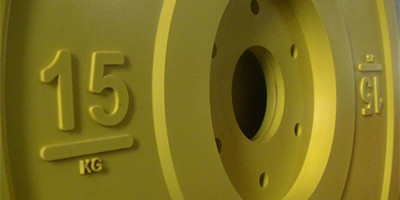
Some comp bumpers have one-piece inserts that are anchored in another way that’s more like the anchoring system I detailed in a section above. Basically they’re all good. It’s just different ways of doing it.
Comp bumpers are more expensive. Durability-wise, they are about the same as econ bumpers that meet the requirements I’ve gone over so far in this post. Comp bumpers are more expensive because there is more steel involved and because they are usually calibrated to very tight weight tolerances for competition purposes.
Also, the bounce is very minimal, because they are so hard. With this extra hardness you’re more likely to start pulverizing low quality concrete than you will with econ bumpers, even under rubber flooring, making comp bumpers less desirable for most purposes.
Fringe’s comp style bumpers are well priced and get good reviews.
Fringe’s Extra Features
Aside from the anchored inserts, Fringe does several things that other manufacturers don’t, enough that they deserve special recognition.
A knurled texture that they press into the outside of the inserts (before shaping the inserts, I assume), which you can see in the pics, holds them in place even better.
They apply glue to the inserts where they contact rubber so that they adhere even better.
They make their 10lb and 15lb bumpers with extra-hard rubber of shore durometer 90 to prevent them from taco-ing when dropped because they’re so thin. Their 25lb+ sizes are too thick to taco and have a lower shore durometer rating of 85 to better absorb impact.
They also make their 10lb bumpers 440mm diameter, compared to 450mm on all other sizes. That helps protect the 10lb bumpers. The 10mm difference makes them 5mm higher off the floor when you load any heavier bumpers with it, so that the 10lb don’t absorb as much of the impact. 5mm is really slight. They do still absorb a small amount of impact, with the give in the heavier bumpers as they hit the floor, not to mention the give in the rubber flooring, and that’s perfect.
Fringe didn’t do the minimum and call it good. They recognized the insert problem and did everything they reasonably could.
Fringe promotes the heck out of their bumpers, calling them the best econ bumpers in the world, but I don’t think they do a great job explaining why on their product pages. Maybe my explanations here help.
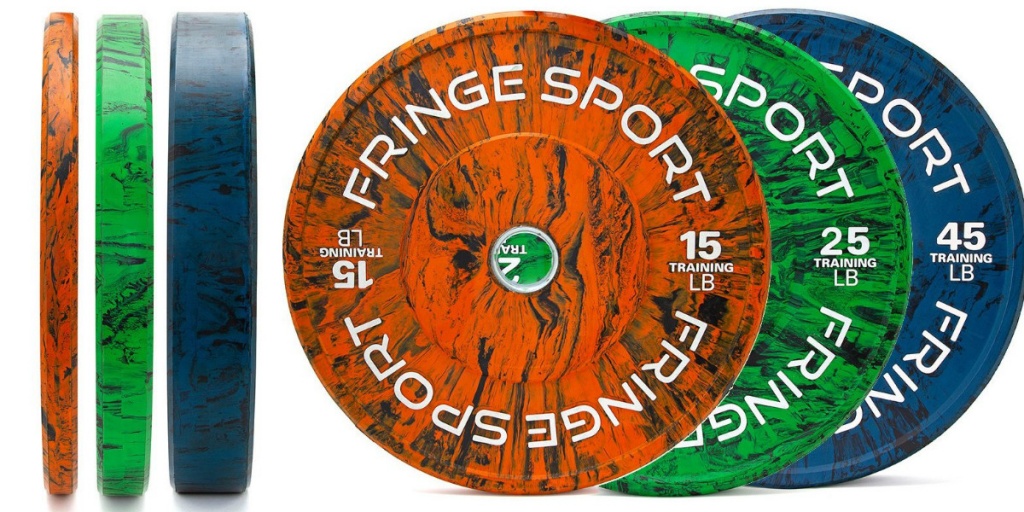
(Update – FringeSport has some pour-art style bumpers that look cool)
Have you run into any bumpers that are coming apart, or that seem to last through anything? Share your comment below!

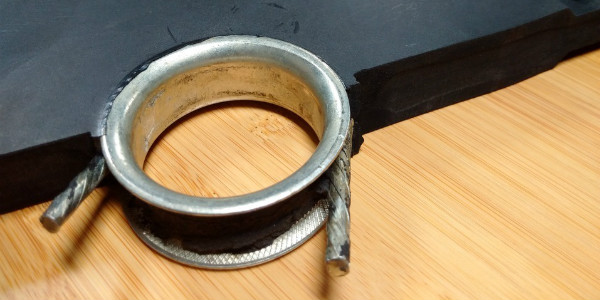
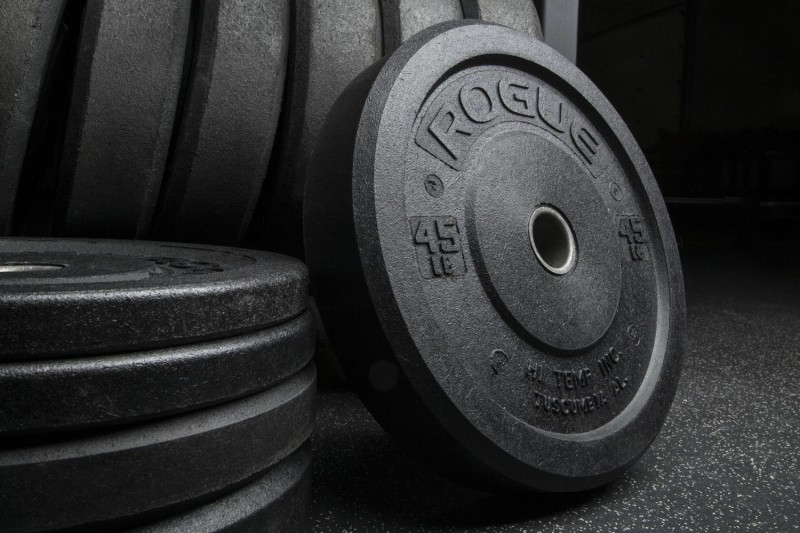
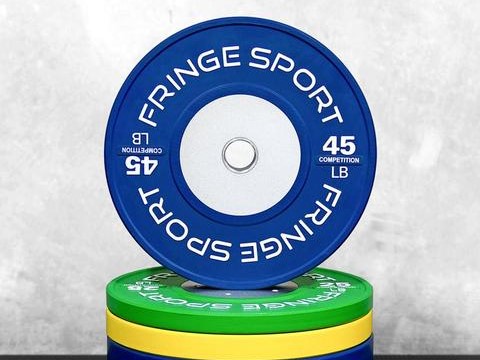
I recently bought a set of 45 lb bumpers that came with no metal inserts or any inserts at all – is that normal or did i get some bad bumpers?
Thanks
That doesn’t sound right. I’ve never seen bumpers without inserts. They would break apart too quickly without the metal to stabilize the hole. You do mean bumpers and not rubber coated iron plates, right?
Yes, there are competition bumpers; I just called the store where I purchased and they said in this case there is a steel insert and plate beneath the rubber surface. Have you ever heard of this? I’ve yet to use the plates, so I’ll have to take another look at them.
Thanks for your input.
Have vulcan and rep fitness black bumpers, reps plates started to peel from hub about a year into daily olympic lifting at home. Rep has been great about replacing the larger bumpers but I was 10 days too late for the warranty on the 15lb bumpers. Which started doing it about 5mos after getting them but didnt realize the warranty was only for 6mos on 10s and 15s.
Good that you at least got a few of them replaced! The Rep bumpers have anchors to keep them from spinning, right? Were they starting to pop out the sides?